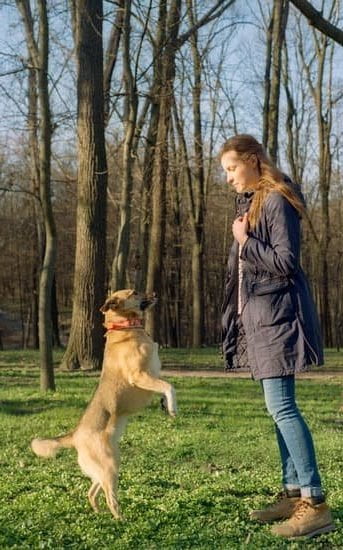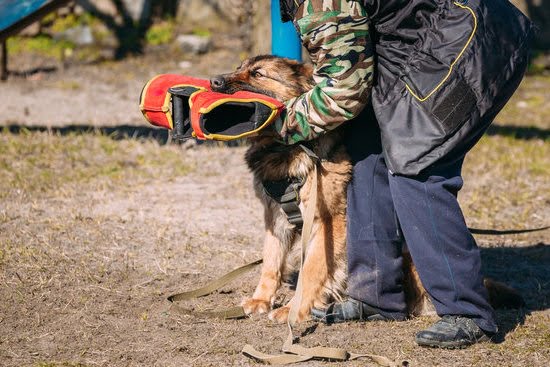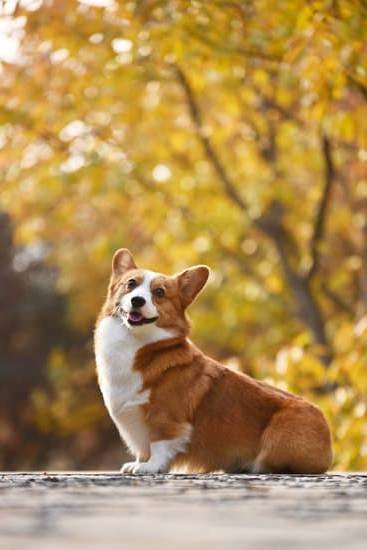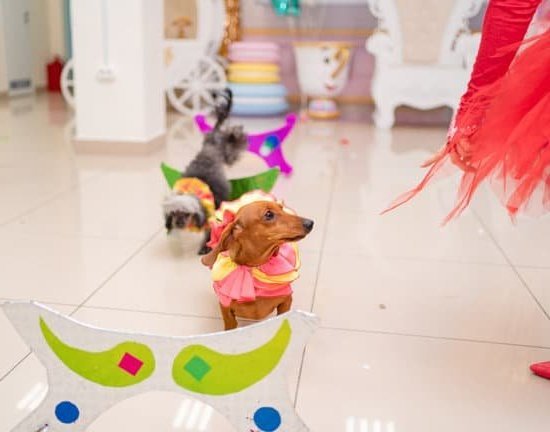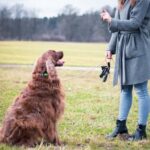Leash reactivity in dogs can present challenges for both the pet and the owner, but with patience and consistency, it is possible to overcome. In this article, we will delve into the essential aspects of understanding and effectively addressing leash reactivity in dogs. One of the key aspects covered will be how to leash train a reactive dog using positive reinforcement techniques.
It is crucial for dog owners to recognize the signs and triggers of leash reactivity in their pets. Whether it’s barking, growling, lunging, or pulling on the leash when encountering other dogs or stimuli, understanding these behaviors is the first step towards addressing them. By being able to identify these cues, owners can work on implementing appropriate training methods to curtail such behaviors effectively.
Leash training is especially important for reactive dogs as it not only ensures their safety but also helps in improving their overall behavior and demeanor. By equipping oneself with the right tools and techniques, owners can set their reactive dogs up for success while out on walks or in other social situations.
With a comprehensive approach that includes preparation, positive reinforcement, handling common challenges, building confidence, and maintaining consistency throughout the training process, owners can help their furry companions become more relaxed and well-behaved on a leash.
Signs and Triggers of Leash Reactivity in Dogs
Leash reactivity in dogs can manifest in various signs and triggers that pet owners should be aware of. Understanding these cues is crucial in addressing the behavior effectively. Some common signs of leash reactivity include lunging, barking, growling, pulling on the leash, and even spinning in circles. These behaviors typically occur when the dog feels threatened or anxious while on a leash, leading to a defensive response.
Triggers for leash reactivity can vary from dog to dog, but some common stimuli include seeing other dogs, unfamiliar people, loud noises, sudden movements, or even bicycles passing by. It’s essential for pet owners to recognize what specific triggers set off their reactive dog to better manage situations during walks. By identifying and understanding these triggers, owners can proactively work on desensitizing their dog through proper training techniques.
In order to address leash reactivity effectively, it is important for pet owners to learn how to leash train a reactive dog using positive reinforcement methods. This approach involves rewarding good behaviors and gradually exposing the dog to trigger situations in controlled environments.
With patience, consistency, and the right tools at hand such as treats, clickers for marking desired behaviors, and a sturdy harness or collar for control during training sessions, pet owners can help their reactive dogs overcome their fears and build confidence on walks.
Importance of Leash Training for Reactive Dogs
Reactive dogs can display behaviors such as barking, lunging, or growling while on a leash when they encounter certain triggers. Understanding leash reactivity in dogs is crucial for pet owners to address this behavior effectively. Leash reactivity can stem from fear, frustration, or past negative experiences, and it is essential to recognize the underlying cause in order to implement the appropriate training methods.
It is important for pet owners to be aware of the signs and triggers of leash reactivity in their dogs. Signs may include pulling on the leash, raised hackles, or intense focus on other animals or people. Triggers can vary from other dogs and strangers to specific sounds or environments. By identifying these signs and triggers, pet owners can anticipate potentially reactive situations and take proactive measures to manage their dog’s behavior.
Leash training plays a significant role in helping reactive dogs overcome their behavioral issues. Properly trained dogs learn to walk calmly on a leash without reacting aggressively towards stimuli. The training process involves utilizing positive reinforcement techniques to build trust and confidence in the dog. Consistency, patience, and a deep understanding of how to leash train a reactive dog are key components in successfully improving their behavior and ensuring they can enjoy walks without undue stress or anxiety.
| Leash Reactivity Signs | Common Triggers |
|---|---|
| Pulling on the leash | Other dogs |
| Raised hackles | Strangers |
| Intense focus on stimuli | Specific sounds |
Preparing for Leash Training
Leash training a reactive dog can be a challenging but rewarding process. Before embarking on this journey, it is crucial to ensure that you have the right tools and equipment to set both you and your furry friend up for success. Here are some essential items you will need:
- A sturdy leash: Opt for a durable leash that is at least six feet long to give your dog enough room to move around but still maintain control.
- Properly fitted harness or collar: Choose a harness or collar that fits your dog comfortably and securely, as this will help prevent them from slipping out when they get reactive.
- Treats: Positive reinforcement is key in leash training, so make sure to have plenty of your dog’s favorite treats on hand to reward good behavior.
In addition to these items, consider investing in a front-clip harness or head halter for additional control and redirection during walks. These tools can help redirect your dog’s focus away from triggers and towards positive behaviors.
It is also important to train yourself on how to use these tools effectively before starting leash training with your reactive dog. Practice using the harness or collar in a controlled environment first, so you can confidently handle any situations that may arise while out on walks. By being prepared with the right tools and equipment, you can create a safer and more enjoyable experience for both you and your reactive pup as you work towards leash training success.
Remember, the foundation of successful leash training lies in patience, consistency, and positive reinforcement. With the proper tools and equipment in hand, you are one step closer to helping your reactive dog overcome their leash reactivity and become a happier, more confident companion on walks.
Step-by-Step Guide to Leash Training a Reactive Dog
Leash training a reactive dog can be a challenging but rewarding process. By understanding the underlying reasons for your dog’s reactivity and taking the right approach to training, you can help your furry friend become more comfortable and confident while on walks. Here’s a step-by-step guide on how to leash train a reactive dog:
Establish a Positive Association
The first step in leash training a reactive dog is to create a positive association with the leash and walking. Start by introducing the leash to your dog in a calm environment, allowing them to sniff and investigate it at their own pace. Use treats or toys to reward your dog for showing interest in the leash, associating it with something enjoyable.
Gradual Exposure to Triggers
Once your dog is comfortable with the leash, gradually expose them to their triggers while on walks. Start at a safe distance from the trigger and reward calm behavior. As your dog becomes more relaxed, slowly decrease the distance between them and the trigger. Be patient and take it one step at a time, always ensuring your dog feels safe and secure.
Practice and Consistency
Consistency is key when leash training a reactive dog. Practice short training sessions regularly, focusing on positive reinforcement techniques to encourage good behavior. Celebrate small victories along the way and be patient with setbacks. With time and dedication, you can help your reactive dog build confidence and feel more at ease while on walks.
By following these steps and being patient and consistent in your approach, you can make progress in leash training your reactive dog. Remember that every dog is unique, so tailor your training methods to suit your furry friend’s individual needs. With time, effort, and positive reinforcement, you can help your reactive dog become a happier and more relaxed companion on walks.
Positive Reinforcement Techniques for Leash Training
Leash training a reactive dog can be a challenging but rewarding process. Positive reinforcement techniques are crucial in helping your dog learn to behave appropriately on walks. One effective method is using treats to reward good behavior while walking on a leash. Whenever your dog walks calmly beside you without reacting to triggers, promptly reward them with a treat. This will reinforce the desired behavior and encourage them to repeat it.
Another important positive reinforcement technique is incorporating verbal praise and affection during leash training sessions. Dogs thrive on the approval of their owners, so praising them when they exhibit good leash manners can be very motivating. Use an upbeat and encouraging tone to let your dog know they are doing well. This form of positive reinforcement can strengthen the bond between you and your furry companion while reinforcing proper leash etiquette.
Consistency is key when implementing positive reinforcement techniques for leash training a reactive dog. It’s essential to be patient and persistent in your efforts, as changing behavior takes time. Remember that every dog is unique, so it may take some trial and error to find the most effective positive reinforcement methods for your canine companion. By staying committed to using positive reinforcement, you can help your reactive dog become more comfortable and confident while walking on a leash.
| Positive Reinforcement Techniques | Benefits |
|---|---|
| Use of treats | Rewards good behavior and encourages repetition |
| Verbal praise and affection | Motivates dogs and strengthens the bond with owners |
| Consistency | Key in reinforcing desired behaviors over time |
Handling Common Challenges While Leash Training a Reactive Dog
When it comes to leash training a reactive dog, there are bound to be challenges along the way. It’s important to remember that every dog is different, and what works for one may not work for another. In this section, we will discuss some of the common challenges you might face while leash training a reactive dog and provide tips on how to overcome them.
Managing Distractions
One of the most common challenges when leash training a reactive dog is managing distractions. Whether it’s other dogs, squirrels, or people passing by, these distractions can trigger reactive behaviors in your dog. To address this challenge, start by practicing in a controlled environment with few distractions and gradually increase the level of distractions as your dog becomes more comfortable and responsive. Keep treats handy to redirect your dog’s attention back to you whenever they get distracted.
Dealing With Leash Reactivity Triggers
Identifying and addressing triggers is crucial when leash training a reactive dog. Common triggers include loud noises, sudden movements, or even certain types of people or animals. Take note of what sets off your dog’s reactivity and work on desensitizing them to these triggers through gradual exposure and positive reinforcement techniques. If necessary, seek the help of a professional trainer who specializes in working with reactive dogs.
Patiently Managing Setbacks
It’s important to remember that progress may not always be linear when leash training a reactive dog. Setbacks are normal and should be expected during the training process. Stay patient and consistent in your approach, celebrating small victories along the way.
Remember that every interaction with your dog is an opportunity for learning and growth, so remain calm and positive even in the face of setbacks. With time, patience, and dedication, you can help your reactive dog become more confident and well-behaved on walks.
Building Confidence in a Reactive Dog Through Leash Training
Leash reactivity in dogs can stem from a variety of factors such as fear, anxiety, or past negative experiences. Reactive dogs may exhibit behaviors like barking, lunging, or growling while on a leash, making walks stressful for both the dog and the owner. To address this issue, it is crucial to focus on building confidence in the reactive dog through effective leash training techniques.
One key aspect of helping a reactive dog gain confidence is implementing positive reinforcement techniques during leash training. By rewarding desirable behaviors with treats, praise, or playtime, you can help your dog associate pleasant experiences with being on a leash. This positive association can gradually help reduce the reactivity levels while out for walks and boost the dog’s self-assurance.
In addition to positive reinforcement, gradual desensitization to triggers that cause leash reactivity can also aid in building confidence in your dog. Slowly exposing the dog to these triggers from a safe distance and rewarding calm behavior can help them overcome their fear or anxiety over time.
Consistency and patience are key when working with reactive dogs, as progress may be slow but ultimately rewarding when handled with care and compassion. Adopting a calm and confident demeanor yourself during walks can also positively influence your dog’s behavior and overall well-being.
Maintaining Consistency and Patience in the Leash Training Process
Leash training a reactive dog can be a challenging yet rewarding process. It requires understanding leash reactivity, identifying triggers, and using positive reinforcement techniques to help your furry companion overcome their fears. One of the most crucial aspects of leash training is maintaining consistency and patience throughout the process.
Consistency is key when it comes to successfully leash training a reactive dog. Establishing clear rules and boundaries will help your dog understand what is expected of them during walks. Consistent training sessions, using the same cues and rewards, will reinforce good behavior and gradually decrease reactivity. It’s important to stick to a routine and avoid sudden changes that may confuse or frustrate your dog.
Patience is another essential element in leash training a reactive dog. Every pup learns at their own pace, so it’s important not to rush the process or get frustrated if progress seems slow. Remember that building confidence and trust takes time, especially for a reactive dog. Stay calm, positive, and patient with your furry friend as they work through their fears and anxieties on the leash.
In conclusion, leash training a reactive dog requires dedication, consistency, and above all, patience. By following the step-by-step guide provided in this article and using positive reinforcement techniques, you can help your furry friend become more confident and well-behaved on walks.
Remember to be patient with your pup as they learn to navigate challenging situations and always celebrate small victories along the way. With time and effort, you can successfully leash train your reactive dog and enjoy stress-free walks together.
Frequently Asked Questions
Can You Train a Leash Reactive Dog?
Training a leash reactive dog is definitely possible with consistency, patience, and the right techniques. It involves desensitization, counter-conditioning, and proper management strategies to help the dog learn new, positive behaviors while on a leash.
What Is the Best Leash for a Reactive Dog?
The best leash for a reactive dog depends on the individual dog’s needs and behavior triggers. Many owners find success with using a front-clip harness or a head halter to provide better control and reduce pulling. It’s important to choose a leash that is comfortable for both the dog and the handler.
Do Dogs Grow Out of Leash Reactivity?
While some dogs may naturally grow out of leash reactivity as they mature and gain more experience with different environments, many will require ongoing training and management throughout their lives. Consistent training can help improve a dog’s behavior over time, even if they don’t completely outgrow their reactivity.

Welcome to the blog! I am a professional dog trainer and have been working with dogs for many years. In this blog, I will be discussing various topics related to dog training, including tips, tricks, and advice. I hope you find this information helpful and informative. Thanks for reading!

